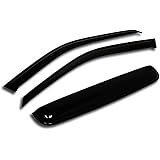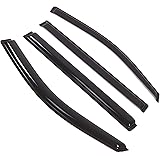Table of Contents
Ever wondered how to tell if someone put a nail in your tire? A punctured tire can be really frustrating and even dangerous. If your tire keeps losing air, it might be punctured. But figuring out why can be tricky.
Spotting the signs of a nail in your tire is key to fixing it fast. A nail can cause more harm, like a blowout or uneven wear, if you don’t act quickly.
Knowing the signs of a tire puncture helps you take action. In this article, we’ll look at the main signs of a nail in your tire. We’ll also tell you how to find them.
Key Takeaways
- Signs of a punctured tire include persistent low tire pressure.
- A nail in your tire can cause further damage if left unchecked.
- Identifying the signs of a nail in your tire is crucial to addressing the issue promptly.
- Regular tire checks can help detect punctures early.
- Tire damage from a nail can lead to uneven wear or tire blowouts.
Understanding Tire Punctures
Tire punctures can be a big problem for car safety and driver safety. Understanding the causes of tire punctures is key to preventing and spotting them.
Common Causes of Tire Punctures
Tire punctures often come from road debris like nails, screws, or sharp rocks. A study found that “road debris is responsible for a significant percentage of tire punctures on highways.”
The chance of hitting road debris depends on where you drive. Places with lots of construction or poor road care are more likely to have debris that can puncture tires.
The Difference Between Accidental and Deliberate Damage
Telling apart accidental and deliberate tire damage is important. Accidental damage happens when you hit something sharp on the road by mistake. Deliberate damage, on the other hand, is when someone intentionally harms your tire, like by putting a nail in it.
To figure out if a tire puncture was intentional, look for patterns or signs. Automotive experts say, “the placement and nature of the puncture can show if it was an accident or done on purpose.”
Why Someone Might Put a Nail in Your Tire
It’s important to know why someone might damage your tire. This can cause a lot of trouble and cost you money.
Common Motivations for Tire Sabotage
There are many reasons why someone might damage your tire. It could be because of a personal grudge, revenge, or even a bad joke. Sometimes, it’s because of a parking fight or other disagreements.
People who might do this include those in fights, business rivals, or anyone with a history of trouble. Knowing why can help us stay safe.
| Motivation | Description | At-Risk Groups |
|---|---|---|
| Personal Vendictas | Acts of revenge against an individual | People involved in personal disputes |
| Parking Disputes | Damaging a vehicle due to parking issues | Individuals with a history of parking conflicts |
| Business Rivalries | Sabotage as a form of competition | Business owners or employees in competitive industries |
Who Is Most at Risk of Tire Vandalism
Some people are more likely to have their tires damaged. This includes those living in high-crime areas or those in big legal or business fights.
Understanding why tires get damaged helps us keep our cars safe. Being aware and taking steps to prevent it is crucial.
Visual Signs of a Nail in Your Tire
Spotting a nail in your tire needs a sharp eye and knowledge. A detailed look can show important signs of a nail or tire damage.
What a Nail in Tire Typically Looks Like
A nail in a tire looks like a sticking out object, often with its head showing. Sometimes, the nail is fully inside, leaving a small hole. It’s crucial to check the tire well, as a nail can be missed, even if it’s at an angle.
Where to Look for Visible Damage
Start by looking over the whole tire, including the sides and tread. Focus on any puncture wounds or objects sticking out. Also, check the valve stem and nearby for damage.
Using a Flashlight for Better Inspection
A flashlight is great for checking your tire for a nail, mainly in dark places. Light up the tire to see any damage or foreign objects. This makes finding a nail easier, even if it’s hidden.
“A thorough inspection is key to identifying tire damage. Using a flashlight can significantly enhance your ability to spot issues.”
By following these steps and staying alert, you can find signs of a nail in your tire. Then, you can fix the problem right away.
How to Tell If Someone Put a Nail in Your Tire
Figuring out if a nail in your tire was an accident or sabotage is key. First, you need to check the situation closely.
Identifying Suspicious Placement Patterns
Looking at where the nail is placed can tell you a lot. If nails are in a pattern, it might not be an accident. For example, nails in a line or in one spot could mean someone did it on purpose.
Signs of Deliberate vs. Accidental Punctures
To tell if the puncture was intentional, look closely at the tire and the nail. Intentional punctures often have certain signs, like being at an angle or in a pattern. Accidental ones are usually random and don’t follow a pattern.
| Characteristics | Deliberate Punctures | Accidental Punctures |
|---|---|---|
| Placement Pattern | Often in a straight line or specific area | Random and scattered |
| Nail Angle | Lodged at an angle | Usually perpendicular to the tire surface |
| Number of Punctures | Multiple punctures common | Typically a single puncture |
Multiple Punctures: A Red Flag
Seeing more than one puncture is a big warning sign. If you find multiple nails or punctures, it’s likely someone did it on purpose. This could be vandalism, and you should act fast to stop more damage.
By carefully checking your tire and understanding the signs, you can figure out if someone intentionally damaged it.
Tire Pressure Changes as Warning Signs
It’s key to watch tire pressure to spot punctures early. Changes in pressure can show a puncture. Knowing how to check pressure and the difference between slow and fast loss is important.
Gradual vs. Sudden Pressure Loss
Tire pressure can drop slowly or quickly. Slow loss might come from a small puncture, like a nail. Quick loss usually means a bigger problem, like a big puncture.
- Slow loss might not show up right away, so checking often is a must.
- Fast loss can drop pressure quickly, often with a flat tire to show for it.
Using a Tire Pressure Gauge Effectively
A tire pressure gauge is a simple tool for checking pressure. Here’s how to use it right:
- Check pressure when tires are cold for the best reading.
- Press the gauge firmly onto the tire valve stem.
- Read the pressure and compare it to what your car manual or tire placard says.
Digital Tire Pressure Monitoring Systems
Digital tire pressure monitoring systems (TPMS) give real-time readings and alerts. They’re great for:
- Finding pressure loss early to avoid accidents.
- Being easy, as you don’t need to check manually.
Even with TPMS, knowing how to manually check pressure and understand the results is still vital.
Unusual Tire Performance Indicators
Unusual tire performance can mean a nail is in your tire. This affects your vehicle’s handling and safety. A damaged tire changes how your car operates.
Changes in Vehicle Handling
A nail in the tire can make your car pull to one side. It also makes steering less responsive. At first, these changes might be small but grow as the tire loses air or gets more damage.
Key signs to look out for include:
- Increased effort required to steer the vehicle
- The vehicle drifting or pulling to one side
- Reduced stability, specially at higher speeds
Vibrations and Wobbling
Vibrations or wobbling while driving might mean a tire problem. The imbalance from the puncture or nail causes these vibrations. You might feel them through the steering wheel or the floor.
Common symptoms include:
- Vibrations that increase with speed
- A wobbling or shaking sensation, specially when braking or cornering
- Unusual tire wear patterns
Noise Changes While Driving
A change in driving noise can also indicate a tire problem. A damaged tire makes different sounds. This is because of the altered shape or the nail rubbing against the tire’s inside.
| Noise Type | Possible Cause |
|---|---|
| Thumping or bumping noise | Tire bulge or weak spot |
| Hissing sound | Air escaping from the puncture |
| Grinding or scraping noise | Nail or debris causing internal friction |
Spotting these signs early can keep you safe on the road. It might also save you from expensive repairs later.
Conducting a Thorough Tire Inspection
Checking your tires for damage is key. Look for things like nails or vandalism. This helps find problems early.
Step-by-Step Inspection Process
To check your tires well, do these steps:
- First, look at the tire for any damage or wear.
- Then, check the tread and sidewalls for punctures, cuts, or bulges.
- Use a flashlight to see better, if it’s dark or the tire is dirty.
- Remove any debris or foreign objects you find, but be careful not to damage more.
Tools Needed for Proper Inspection
The right tools help a lot in checking your tires. You’ll need:
| Tool | Purpose |
|---|---|
| Flashlight | Makes the tire easier to see |
| Tire Pressure Gauge | Checks if the tire pressure is right |
| Tread Depth Gauge | Measures how deep the tread is |
Safety Precautions During Inspection
Always be safe when checking your tires. Here’s how:
- Make sure you’re in a safe spot, away from cars.
- Turn off the engine and lock the parking brake.
- Wear gloves to protect yourself from sharp things.
By following this guide and using the right tools, you can check your tires well. This way, you can spot problems like a nail in your tire.
The Soap and Water Test for Punctures
The soap and water test is a simple way to find tire punctures. It works by using soapy water on the tire. If bubbles form, it means there’s a puncture.
Materials Needed for the Test
To do the soap and water test, you need a few things:
- A spray bottle filled with soapy water
- A bucket or container to mix the soapy water solution
- Mild dish soap
- Water
Just mix a bit of mild dish soap with water in the spray bottle or bucket. This makes the soapy water solution you need.
How to Perform the Test Correctly
To do the test right, follow these steps:
- Inflate the tire to the right pressure.
- Mix the soapy water solution in the spray bottle or bucket.
- Spray or apply the soapy water solution onto the tire, covering the area where you suspect the puncture.
- Look at the tire for bubble formations.
Make sure to check the tire well, covering all possible puncture spots.
Interpreting Bubble Formations
Bubbles on the tire mean air is leaking, showing a puncture. The size and where the bubbles are can tell you more:
- Big bubbles mean a bigger puncture.
- Small bubbles might mean a small puncture or a slow leak.
Watch the bubbles closely to figure out the puncture’s size and where it is. This helps you know what to do next.
Professional Inspection: When to Seek Help
A professional inspection can give you peace of mind. It ensures your safety on the road by finding tire problems accurately.
Signs You Should Consult a Tire Professional
If you see any of these signs, it’s best to get a professional tire check:
- Unusual tire wear patterns
- Persistent loss of tire pressure
- Visible damage to the tire or wheel
- Vibrations or unusual noises while driving
Consulting a professional can spot issues before they get worse.
What to Expect During a Professional Inspection
During a professional tire check, the tech will:
- Check the tire pressure and adjust it to the right level
- Look for visible damage or wear on the tire
- Use special tools to find any internal damage
- Give advice on what to do next, like repair or replace
Average Costs of Professional Inspections
The price of a professional tire check can change based on who you choose and how detailed it is.
Usually, you’ll pay between $20 to $50 for a basic check.
Getting a professional inspection can save you money later. It finds problems early.
Distinguishing Between Different Types of Tire Damage
Knowing how to spot different types of tire damage is key for safety and upkeep. Damage can come from sharp objects, accidents, or just wear and tear. It’s important to understand the damage to know what to do next.
Nail Punctures vs. Other Sharp Objects
Nail punctures are common, but other sharp things can also harm your tires. The look and where the puncture is can tell you what caused it. Nail punctures usually have a clean hole and might show signs of vandalism. But, glass or metal shards can make more messy damage.
- Nail punctures often have a characteristic entry point.
- Other sharp objects can cause more extensive and irregular damage.
- The location of the puncture can indicate the cause.
Impact Damage vs. Puncture Damage
Impact damage and puncture damage are different. Impact damage happens when a tire hits something hard, like a curb. Puncture damage is from sharp things going into the tire slowly. Knowing the difference helps decide if you can fix the tire or if it needs to be replaced.
Key differences include:
- Impact damage often results in immediate and noticeable effects.
- Puncture damage may develop gradually.
Age-Related Deterioration vs. Deliberate Damage
Age-related wear and deliberate damage are two different reasons for tire damage. Wear from age shows as cracks, dry rot, and uneven wear. Deliberate damage, like vandalism, can cause holes, cuts, or other damage. Knowing the difference helps you act right.
To tell age-related wear from deliberate damage, look for:
- Signs of natural aging, such as cracks or dry rot.
- Evidence of intentional acts, such as multiple punctures or cuts.
Documenting Suspected Tire Sabotage
If you think someone damaged your tire on purpose, it’s key to document it well. This helps build a case and find the person who did it.
Clear Photographs of Damage
Start by taking clear, well-lit photos of the damage from different sides. Make sure the photos are high-quality and show the tire’s state, including any objects like nails.
Tips for Photographing Tire Damage:
- Use good lighting, like natural light, to show the damage clearly.
- Take photos from various angles to give a full view.
- Get close-up shots of the damage and any objects in the tire.
- Photograph the area around the tire to give context.
Noting Time and Location Details
It’s also important to record when and where you found the damage. This info is key to figuring out what happened.
Details to Record:
- The exact date and time you noticed the damage.
- Where your vehicle was parked when you found the damage.
- Any other important details about the situation.
Creating a Timeline of Events
Making a detailed timeline of when you found the damage is helpful. It should include when you last used the vehicle, where it was parked, and when you noticed the damage.
Steps to Create a Timeline:
- Remember the last time you used the vehicle and its condition.
- Record where the vehicle was parked and for how long.
- Document when you first saw the damage and who noticed it.
- Add any other important events or observations.
By following these steps, you’ll have a detailed record of the suspected tire sabotage. This can be very helpful in any investigation or action that follows.
When to Contact Law Enforcement
If you think someone has damaged your tire on purpose, it’s important to know when to call the police. Understanding how to involve the authorities is key.
What Constitutes Criminal Vandalism
Criminal vandalism means someone intentionally harms another person’s property. This includes damaging your tire on purpose. Signs of criminal vandalism include:
- Multiple punctures or damage to more than one tire
- Punctures or damage in a suspicious pattern
- Evidence of forced or deliberate action (e.g., a nail or other object lodged in the tire)
How to File a Police Report
Filing a police report is crucial to document the incident and find the person who did it. You can:
- Visit your local police station in person
- Call the non-emergency police number
- File a report online, if available in your jurisdiction
When you file a report, be ready to share all the details. This includes when, where, and how the vandalism happened.
What Evidence Police Will Need
When you file a report, give as much evidence as you can. This helps the police investigate. You should provide:
- Photographs of the damaged tire(s)
- Any objects found lodged in the tire (e.g., a nail)
- Witness statements, if applicable
- Surveillance footage, if available
Knowing what vandalism is, how to report it, and what evidence is needed helps you deal with the situation. It also helps prevent it from happening again.
Preventing Future Tire Sabotage
To stop tire sabotage, you need to be aware, park smart, and take security steps. Knowing the risks and acting early can lower the chance of your car being targeted.
Parking Strategies to Reduce Risk
Smart parking can help prevent tire sabotage. Here’s how:
- Park in bright, busy spots where troublemakers are less likely to strike.
- Steer clear of dark or lonely spots that hide vandals.
- Choose garages or lots with guards or cameras.
Security Cameras and Lighting
Adding security to your vehicle can scare off vandals. Think about:
- Putting up security cameras to watch over your car.
- Boosting outdoor lights to banish shadows where vandals hide.
- Getting lights that turn on when someone gets close to your car.
These steps protect your car and make the area safer.
Tire Protection Products
There are many products to shield your tires from sabotage. Look into:
- Tire sealants that fix punctures on their own.
- Reinforced liners for extra defense against sharp things.
- Tire covers to shield your tires when parked for a while.
These products aren’t perfect, but they can lessen sabotage damage.
By using these methods, you can stop future tire sabotage. Your vehicle will stay safe and sound.
Repairing a Tire with a Nail
When you find a nail in your tire, you might wonder if you can fix it or if you need a new one. Repairing a tire with a nail is possible under certain conditions. Knowing these conditions, along with temporary fixes and professional repair methods, is key to driving safely again.
When a Tire Can Be Repaired
Not every nail puncture means you need a new tire. A tire can be fixed if the puncture is in the tread area and not too big. The location and size of the puncture are key to deciding if a repair is possible.
According to tire industry rules, a puncture can be fixed if it meets certain criteria:
| Criteria | Description |
|---|---|
| Puncture Location | Within the tread area, not in the sidewall |
| Puncture Size | Typically, punctures up to 1/4 inch in diameter can be repaired |
| Tire Condition | The tire should not have any other significant damage |
Temporary Fix Options
If you’re stuck with a nail in your tire, there are quick fixes. One common method is using a tire plug. This involves putting a rubber plug into the puncture to seal it. While it can help you get to a repair shop, it’s not a permanent solution.
Another quick fix is using a tire repair kit, which includes a plug and a sealant. These kits are great for emergencies but should be checked by a pro as soon as you can.
“A temporary fix can be a lifesaver, but it’s crucial to have a professional assessment to ensure your tire is safe to drive on.”
Professional Repair Methods
For a lasting fix, getting a professional repair is best. The most common method is a plug and patch repair. This involves removing the tire, checking the inside, applying a patch, and then plugging the puncture from the inside.
Professional tire technicians use special tools to make sure the repair is done right. They can also check the tire for any other damage that might not be visible to the untrained eye.
After a professional repair, it’s important to keep an eye on the tire’s condition. Check the tire pressure regularly, and look for signs of further damage or leakage.
When to Replace Rather Than Repair
It’s important to know when to fix or replace a tire. The decision depends on several key factors.
Safety Considerations for Damaged Tires
Safety is the top priority with a damaged tire. A bad repair or a tire not replaced can cause more harm or even an accident. You need to check how bad the damage is and if the tire can be safely fixed.
Important safety points include the size and location of the puncture, the tire’s age and condition, and if it’s been fixed before.
Cost Comparison: Repair vs. Replacement
The cost of fixing or replacing a tire matters a lot. Repairing a tire is cheaper, but think about the long-term effects of your choice.
| Action | Average Cost | Long-term Value |
|---|---|---|
| Tire Repair | $20-$40 | Temporary solution |
| Tire Replacement | $100-$300 | Permanent solution |
Signs That Replacement Is Necessary
Some signs show you should replace a tire instead of fixing it. These include:
- Large punctures or significant sidewall damage
- Previous repairs that have not held up
- Tire age and overall condition
- Multiple punctures or signs of deliberate damage
If you see any of these signs, it’s best to replace the tire for your safety.

Conclusion
Finding a nail in your tire can be tough, but knowing the signs helps. Look out for common causes of punctures and visual damage. Also, pay attention to how your tire performs.
Some key points to remember include spotting suspicious patterns and using the soap and water test. Knowing when to get help is also important. Regular checks and keeping the right tire pressure are key to avoiding damage.
By following these tips, you can figure out if someone has put a nail in your tire. Then, you can fix or replace it to stay safe on the road.
























































